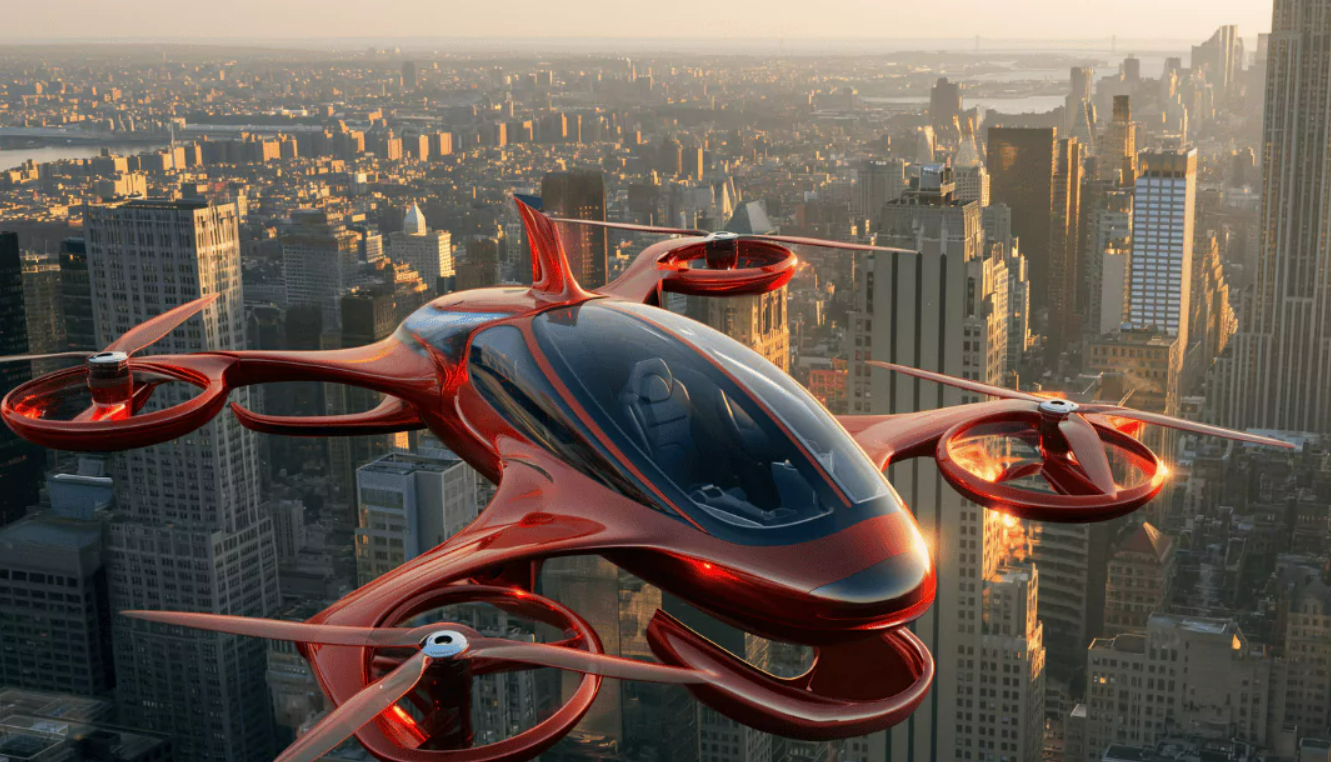|
Getting your Trinity Audio player ready...
|
- Urban Air Mobility (UAM) promises to transform urban transportation with air taxis and aerial vehicles, aiming to “revolutionize how we navigate congested cities.
- Significant challenges include meeting “stringent safety standards,” overcoming regulatory barriers and integrating advanced air traffic management systems.
- UAM offers the potential to “dramatically reduce commute times” and ease urban congestion, but success hinges on collaboration across industries and government agencies.
Navigate the complex landscape of Urban Air Mobility (UAM) as it promises to revolutionise transportation by 2030, addressing challenges from regulatory hurdles and operational complexities. Explore the critical role of AI and big data analytics in realising the future of UAM to reshape transportation, making intra-city air travel more accessible and efficient.
Sky’s the Limit: The Future of Urban Air Mobility
According to NASA (National Aeronautics and Space Administration), the aerospace industry will handle 130 million passenger trips annually by 2030. This growing demand has significantly increased research and development investments for eVTOL (electric Vertical Take-Off and Landing) technology from $2 billion to $30 billion over the next decade. Major companies like Boeing with their Passenger Air Vehicle and Airbus with the A3 Vahana are leading the way, while many emerging companies are using their innovative edge to revolutionise urban air mobility.

The role of artificial intelligence in the success of eVTOL and flying cars cannot be overstated. AI is the driving force behind precise navigation, efficient operation, energy management, and enhanced safety, making the vision of urban air mobility a possibility and an imminent reality. This technological advancement underscores the industry’s commitment to safer and more efficient transportation, paving the way for a future where urban air mobility is a part of our everyday lives.
Key Challenges in Urban Air Mobility
Urban Air Mobility (UAM) promises a future where flying cars seamlessly integrate into our daily lives, revolutionising passenger transportation, logistics, and more. This vision is a beacon of innovation and progress for the aviation industry and technology developers; however, it faces some initial challenges.
- Technology Maturity: Adequate energy storage is essential for extended endurance and the rapid application of thrust for vertical take-off. It is also crucial to effectively integrate AI/ML computing, autonomous navigation systems, and surveillance systems for detecting and avoiding obstacles and ensuring all-weather operations.
- Infrastructure: UAM requires significant infrastructure investment. This includes building Vertiports (vertical ports) on top of skyscrapers and skyports at various city locations, smart local grids for rapid charging and load balancing, ground-based command and control systems for fleet management, and secure communication.
- Advanced Sensor and System Integration: For seamless UAM operation, it is essential to integrate advanced sensors and systems into both airborne and on-ground computing systems. This requires the use of big data analytics and AI/ML to facilitate prediction and conflict resolution. Integrating data from various sources into a dashboard, including weather, traffic, and ground control, is crucial for making real-time decisions and ensuring safe and efficient operations.
- Regulatory Hurdles: The Code of Federal Regulations has significantly amended performance-based standards for small airplanes, indicating the drive for innovation to shape requirements for UAM in the coming years. European Union urges a framework to engage non-aviation stakeholders such as city administrators, National Airspace agencies, and other aviation stakeholders. The emerging framework is maturing and on its way to global adaptation. Recently, the FAA lifted the beyond visual line of sight (BVLOS) constraint, a breakthrough that could pave the way for technology advancements such as eVTOL and further enhance urban air mobility. These developments instil confidence in the future of UAM.
- Operational Complexity: Navigating through complex airspace over a city landscape filled with structures, power, and communication lines, tracking and avoiding obstacles, addressing navigation errors caused by GPS-denied situations or line of sight issues, resolving conflicts in air traffic as urban air mobility (UAM) becomes more prevalent, and establishing necessary technology aid to overcome the operational overhead.
- Social Acceptance: Addressing privacy concerns, minimising noise pollution, and building confidence among the public to embrace new technologies are crucial for the widespread acceptance of UAM. Availability, accessibility, and affordability are key for rapid social acceptance.
Overcoming these challenges will be key to realising the full potential of UAM, unlocking new possibilities for transportation and urban development.


